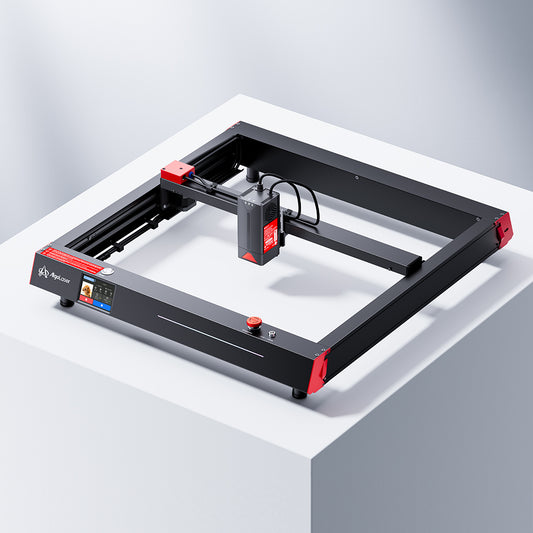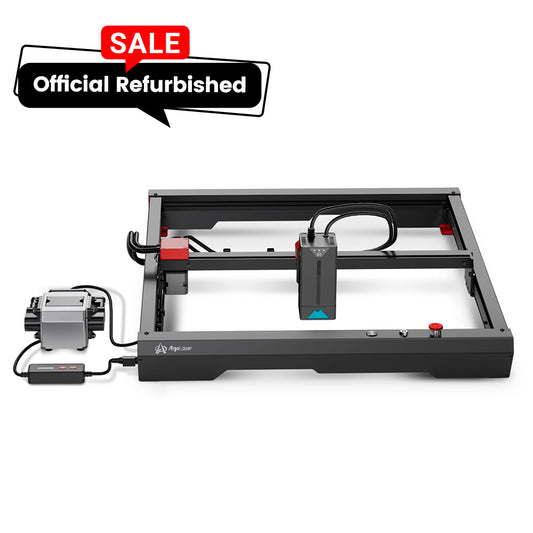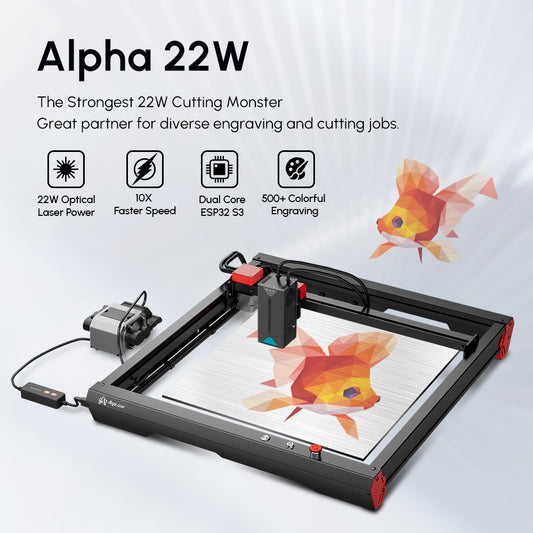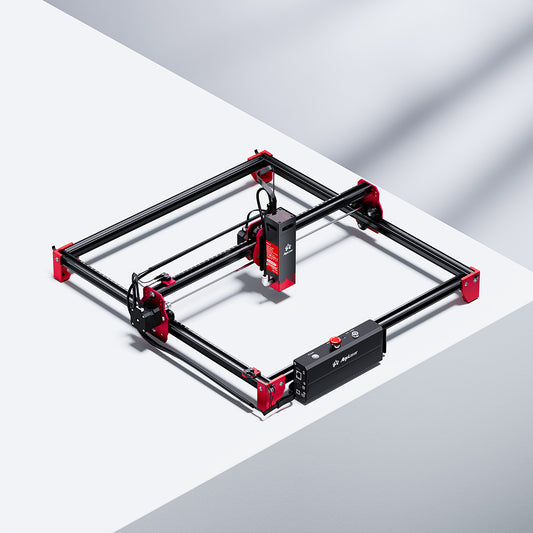How to Make a Wooden Board Game
Board games hold a special place in our hearts, fostering camaraderie and laughter among friends and family. Imagine taking that experience to the next level by crafting your very own wooden board game, infused with personalized details made possible through the magic of a laser engraver. We will explore the art of making wooden board games, from selecting the right tools and materials to generating imaginative ideas. We'll also explore the intricacies of designing a board game and walk you through the mesmerizing process of laser cutting.
Event Dates: December 5 – January 3
Event Page: 2025 Laser Engraver Christmas Sale
👉 Visit 2025 Laser Engraver Christmas Sale and craft your perfect engraving setup today!
✅ Alpha MK2 40W
🎄 AlgoLaser Christmas Deals – Extra 12% Off!
Christmas Activities (December 5 – January 3)
Christmas Price: $899
Use XMAS12 → Final Price: $791
💰 You Save: $108
🚚 Fast Global Delivery (US/EU/MX/BR) – Free 3–7 Day Shipping
🔗 https://algolaser.com/products/algolaser-alpha-mk2-40w-diode-laser-cutter-and-engraver
✅ Alpha MK2 20W
🎄 Alpha MK2 20W Exclusive Christmas Deal!
Christmas Activities (December 5 – January 3)
Use XMASAK20 → $80 OFF
➡️ Final Price: $499 (Original: $579)
🚚 Fast Global Delivery (US/EU/MX/BR) – Free 3–7 Day Shipping
🔗 https://algolaser.com/products/algolaser-alpha-mk2-diode-laser-engraver-algolaser
⚠️ Note: Discount codes cannot be combined with minimum spend offers (such as “Spend $300, Get $30 Off”). Please select the promotion that gives you the best overall value.
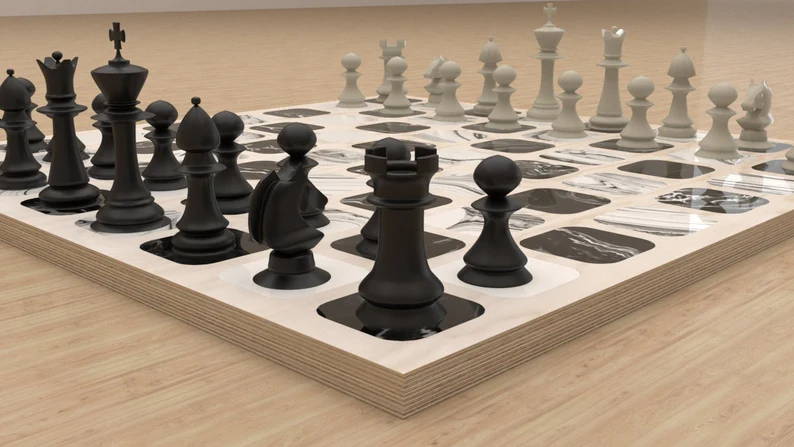
image credit: GlifoFurniture - Etsy
Make a Board Game with the Right Tools and Materials
To embark on your wooden board game journey, it's essential to gather the right tools and materials. Let's explore each element in detail:
Wood Selection
Begin with a high-quality wood that's suitable for engraving. Birch, maple, and oak are excellent choices due to their durability and engraving-friendly characteristics. Ensure the wood is smooth and free of imperfections to achieve the best results.
Invest in a reliable laser engraver. Offering a range of options catering to different needs and skill levels. Consider the power, precision, and ease of use when selecting your laser engraver.
Design Software
Equip yourself with design software like Adobe Illustrator or the open-source Inkscape. These tools will be your creative playground, allowing you to conceptualize and refine your game board's design.
Safety Gear
Before diving into the creative process, prioritize safety. Acquire safety goggles and proper ventilation equipment to protect yourself from potential hazards during the laser engraving process.
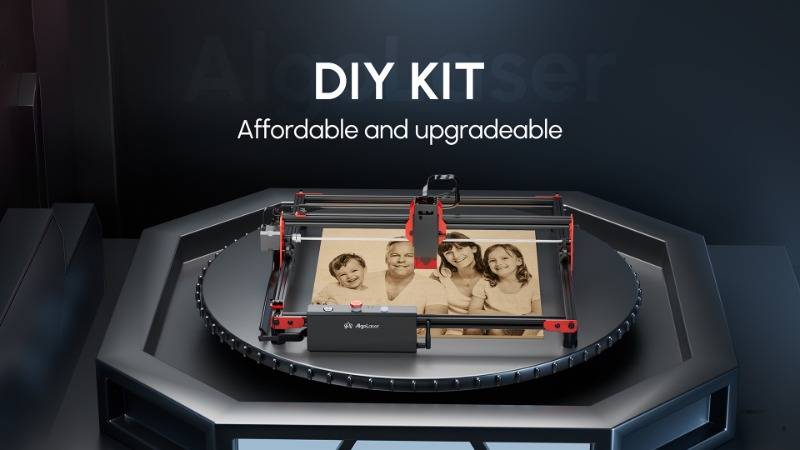
Ideas for Wood Laser-Engraved Board Game Projects
Now that you have your tools and materials in place, let's explore exciting ideas to spark your creativity:
Classic Games with a Twist
Give traditional games like chess, checkers, or backgammon a fresh perspective. Add intricate engravings, unique game pieces, or personalized touches to reinvent these timeless classics.
Themed Adventures
Design a board game inspired by your favorite book, movie, or historical period. The laser engraver allows you to incorporate detailed thematic elements, enhancing the overall gaming experience.
Educational Games
Combine fun and learning by creating an educational board game. Reinforce math, language, or historical concepts through engaging gameplay. Use laser-engraved illustrations to make the learning experience visually appealing.
Customizable Games
Develop a game that allows players to customize their boards or game pieces. Laser engrave spaces that can be modified, creating a dynamic and ever-changing gaming experience.
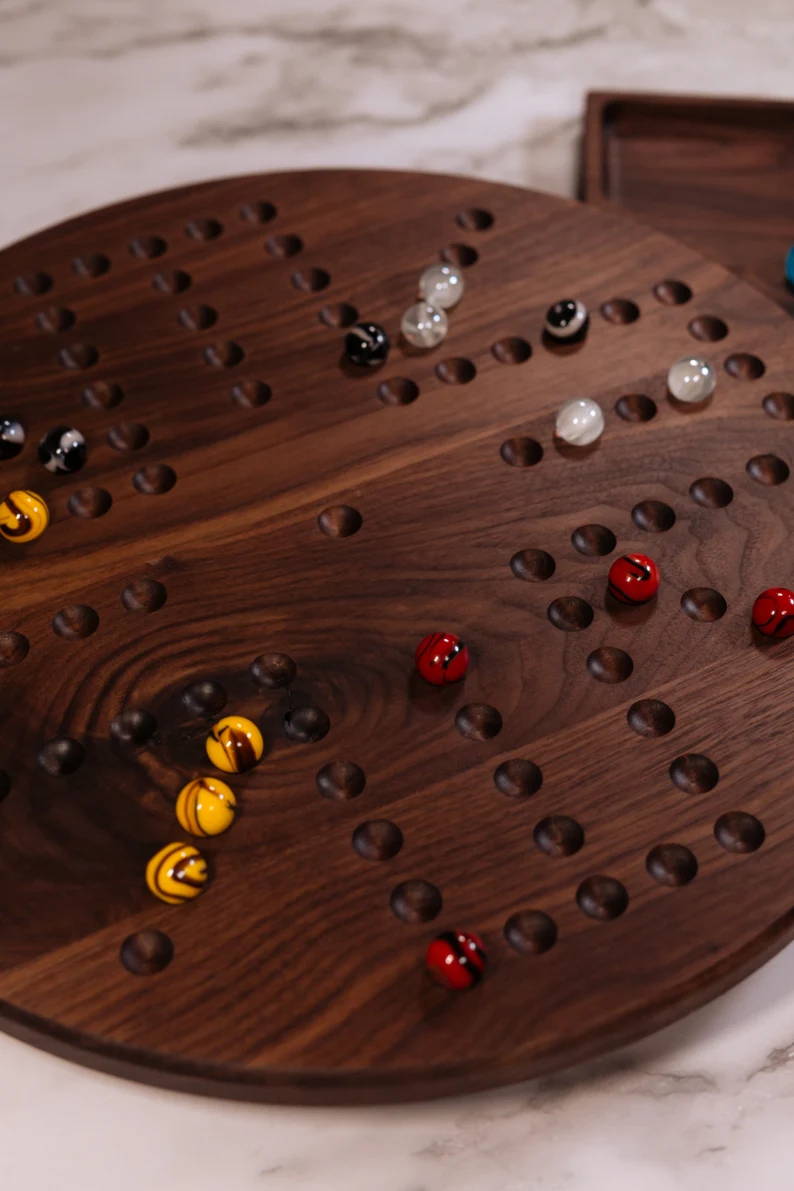
image credit: basicallyperfectca - Etsy
How to Design a Board Game
Designing a board game involves a thoughtful process to ensure a seamless blend of creativity and functionality. Follow these steps to bring your vision to life:
Conceptualization
Begin by defining the theme, rules, and objectives of your game. Consider the number of players, the duration of the game, and the overall experience you want to create.
Sketching
Take your ideas from the abstract to the tangible by sketching the layout of your game board. Map out spaces, paths, and any other essential features on paper before transitioning to digital design.
Digital Design
Transfer your sketches into digital format using design software. This step allows you to add finer details, adjust dimensions, and perfect your layout before moving on to laser engraving.
Laser Engraving Integration
Identify areas of your design that would benefit from laser engraving. Whether it's intricate patterns, illustrations, or personalized touches, the laser engraver can add a professional and artistic touch to your game board.
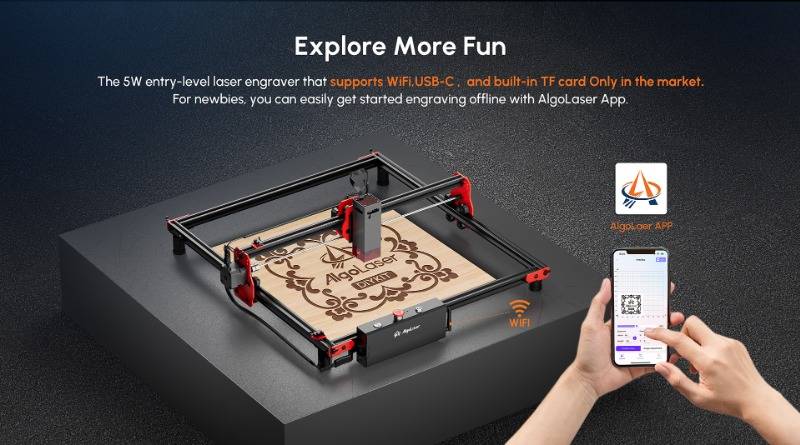
Process of Laser Cutting
The process of laser cutting is where the magic truly happens. Let's break down the steps to transform your digital design into a tangible wooden board game:
Wood Preparation
Cut your chosen wood into the desired size and shape for your game board. Ensure the surface is smooth and free from imperfections to achieve optimal engraving results.
Import Design into Laser Engraver Software
Load your digital design into the laser engraver's software. Adjust settings such as speed, power, and resolution based on the type of wood you're using. This step is crucial for achieving the desired level of precision.
Calibrate the Laser Engraver
Before commencing the engraving process, calibrate the laser engraver to ensure precise cutting and engraving. This step is essential for achieving accurate and clean results.
Test Run
Conduct a test run on a small piece of wood to fine-tune settings and make any necessary adjustments. This step allows you to identify and rectify potential issues before engraving your final board.
Laser Engraving
Once satisfied with the test run, proceed to laser engrave your wooden board. Monitor the process to ensure the laser is cutting and engraving as expected, and make any real-time adjustments if necessary.
Finishing Touches
After the laser cutting is complete, inspect your board for any remaining imperfections or rough edges. Use sandpaper to achieve a smooth finish, and apply a sealant or varnish to protect the wood and enhance its aesthetic appeal.
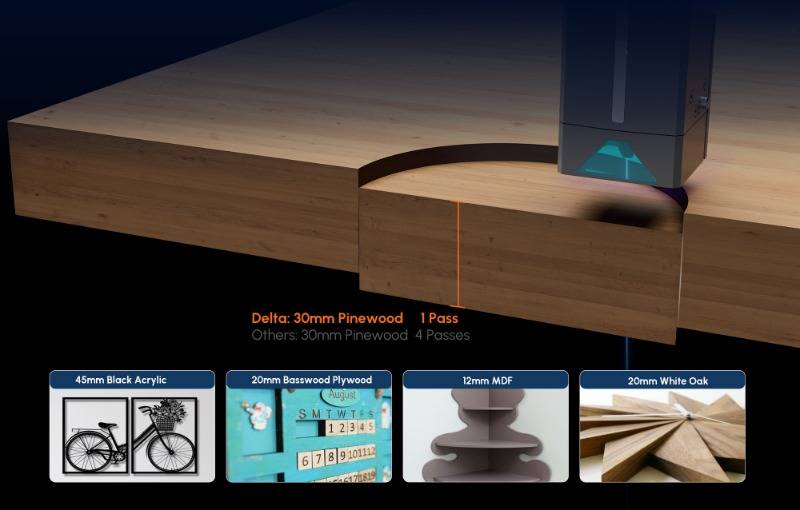
Expanding Your Craft: Advanced Techniques and Tips
Now that you've successfully crafted your wooden board game, let's delve into advanced techniques and additional tips to elevate your craftsmanship:
Layered Designs
Experiment with layered designs to add depth and complexity to your game board. Utilize the laser engraver to cut different layers of wood and assemble them for a three-dimensional effect.
Inlay and Outlay
Incorporate inlay and outlay techniques to enhance specific elements of your game board. This involves cutting into the wood for a recessed effect (inlay) or creating raised areas (outlay), adding texture and visual interest.
Custom Game Pieces
Extend your creativity to the game pieces. Design and laser engrave custom shapes that align with your game's theme. Consider creating a set of unique characters, symbols, or objects that resonate with your players.
Personalized Player Boards
If your game involves individual player boards, take the opportunity to personalize each one. Engrave player names, individualized graphics, or specific spaces for resource management to make the gaming experience even more immersive.
Wood Combination
Experiment with different wood types and combinations to introduce contrasting colors and textures. Combining light and dark woods can create visually stunning and dynamic game boards.
Integrate Technology
Consider integrating technology into your wooden board game. Use the laser engraver to create spaces for electronic components, such as LED lights or sensors, to add an interactive and futuristic element to your creation.
Community Collaboration
Engage with the creative community. Share your designs, seek feedback, and draw inspiration from others who share a passion for crafting wooden board games. Platforms like social media or dedicated forums can be invaluable resources.
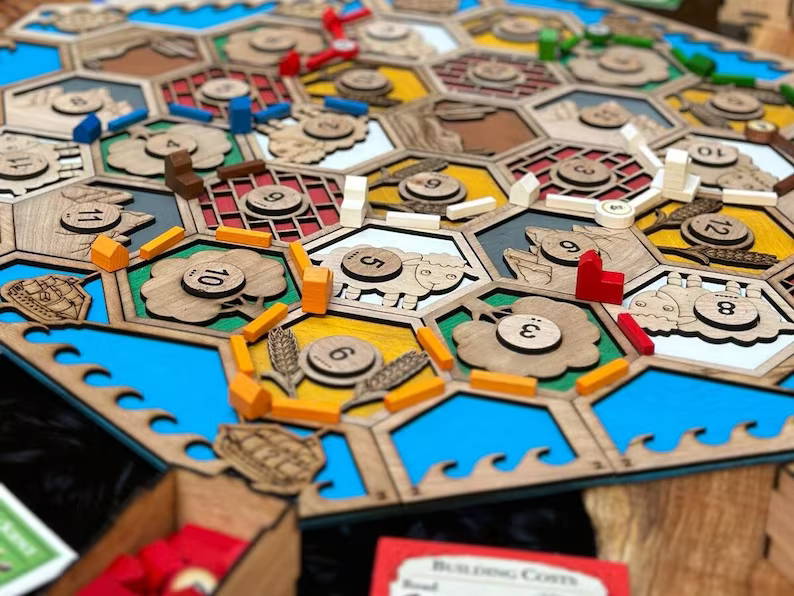
image credit: EchoRidgeFarms - Etsy
Maintenance and Care Tips
Preserving the longevity and aesthetic appeal of your wooden board game is essential. Here are some maintenance and care tips to keep your creation in top-notch condition:
Avoid Direct Sunlight
Prolonged exposure to direct sunlight can cause the wood to fade. Store your wooden board game in a cool, shaded area to maintain its vibrant colors and details.
Regular Cleaning
Dust and debris can accumulate on the surface of your game board. Gently clean it with a soft, lint-free cloth to preserve the engraved details. Avoid using abrasive materials that may scratch the wood.
Protective Coating
Consider applying a protective coating, such as clear varnish, to shield the wood from potential damage. Ensure the coating is compatible with laser-engraved surfaces and won't compromise the details.
Handle with Care
When transporting or storing your wooden board game, handle it with care to prevent scratches or dents. Consider using a protective case or cover for added security.
Temperature and Humidity Control
Wood can expand or contract based on temperature and humidity fluctuations. Store your game board in a stable environment to minimize the risk of warping or cracking.
Conclusion
Crafting a wooden board game with a laser engraver is a fulfilling endeavor that combines artistry and strategy. Your unique creation not only serves as a source of entertainment but also reflects your passion for creativity and craftsmanship. As you explore advanced techniques, remember to share your experiences with the community and continue pushing the boundaries of what's possible with laser engraving.
Whether you're a seasoned artisan or a novice enthusiast, the journey of creating wooden board games is a continuous learning process. Embrace the challenges, celebrate the successes, and most importantly, savor the moments of joy and connection your creation brings to those who experience it. Happy crafting!
Free SVG & Gcode Files for Laser Engraving & Cutting can be found here, wich you can import into our laser cutters directly.


